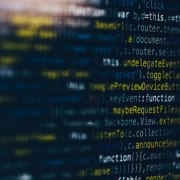Improving Data Integrity Through Forensic Collection: Best Practices and Techniques
The Importance of Data Integrity in Forensic Collection
Ensuring data remains unaltered from the point of collection to its analysis is crucial to drawing reliable conclusions. This provides a solid foundation for decision-making and upholds the reliability and credibility of the investigation process itself.
Data integrity issues can stem from various sources, including unintentional errors during data acquisition or intentional acts of tampering. Therefore, stringent measures must be implemented to preserve the original state of the data throughout the forensic process. A single lapse in maintaining data integrity can lead to erroneous findings, potentially causing significant legal and financial repercussions.
Best Practices for Ensuring Data Integrity
Maintaining data integrity is a cornerstone of forensic collection. Whether it’s for legal proceedings, corporate investigations, or academic research, the accuracy and authenticity of data can make or break a case. To ensure data integrity, it is crucial to follow best practices that form the foundation of any investigation. These include utilizing specialized tools and techniques to safeguard data from corruption or unauthorized alteration and implementing systemic protocols supporting transparency and accountability.
Using Write-Blocking Tools
Write-blocking tools are essential in forensic collection, preventing data modification while allowing read access. This ensures that the original data remains untouched, preserving its integrity. Such tools are particularly useful in scenarios involving digital storage devices, where even a minor alteration in data can lead to significant shifts in the investigation’s direction.
Documenting the Chain of Custody
Maintaining accurate records of the chain of custody helps demonstrate the evidence’s integrity. This documentation should include details about who collected the data, when it was collected, and any custody transfers. Thorough documentation mitigates risks associated with unauthorized access or misinterpretation of data, thereby bolstering the trustworthiness of the investigative findings.
Cryptographic Hashing
Cryptographic hashing algorithms produce a unique hash value for data sets. By comparing these hashes before and after data transfer, investigators can confirm that the data has not been altered. This method is invaluable when data must be transferred across different systems or stakeholders, ensuring its integrity remains intact throughout the investigation.
Standard Techniques in Forensic Collection
Various techniques are used in forensic collection to maintain data integrity and reliability. These methods include:
- Disk imaging is used to create exact replicas of digital storage.
- Network forensics for capturing and analyzing network traffic.
- Mobile forensics for extracting data from smartphones and tablets.
For example, an incident response guide can offer essential best practices and helpful insights during a forensic investigation. Such guides are precious for outlining step-by-step procedures for responding to cybersecurity incidents and ensuring that the data collected is comprehensive and reliable.
Legal and Ethical Considerations
A plethora of legal and ethical standards govern forensic collection. Failing to adhere to these can invalidate the collected data and potentially lead to legal repercussions. Key considerations include:
- Complying with local and international data protection laws.
- Ensuring the privacy and rights of individuals involved.
- Maintaining transparency and accountability throughout the investigation process.
Compliance with legal standards safeguards the integrity of the data and protects the rights of all parties involved. Adherence to ethical principles, meanwhile, fortifies the credibility of the investigative process, ensuring that findings are both just and respectful of privacy laws.
Technology and Expertise: Key Enablers
The role of technology and skilled professionals must be balanced in achieving accurate forensic collection. Advanced tools and expert analysis techniques are indispensable. They provide the necessary support and precision to collect and analyze data efficiently and accurately. For additional insights on emerging tools in forensic technology, refer to this technology trends article.
Expert professionals with cutting-edge technology can navigate complex forensic challenges, applying their knowledge to extract and interpret data with unparalleled accuracy. Their expertise is critical in deploying the right tools and techniques that align with an investigation’s needs.
Real-Life Forensic Collection Scenarios
Real-life examples illustrate the importance of sound forensic collection practices. One noteworthy case is the Equifax data breach investigation, where forensic experts played a pivotal role in identifying the breach’s source and extent. In this scenario, precise methodologies and strict adherence to data integrity principles were critical in piecing together the events leading to the data breach.
This case highlights how meticulous forensic practices can differentiate a successful investigation from one mired in doubt and inaccuracies. By employing robust forensic collection techniques, investigators were able to provide definitive answers and actionable insights, helping to mitigate the breach’s impact and shore up defenses against future incidents.
Staying Updated with Trends and Developments
The field of forensic collection is constantly evolving. To remain effective, professionals must continually update their knowledge and skills. Attending industry conferences, subscribing to relevant journals, and participating in continuous education programs can all be highly beneficial. Staying abreast of the latest developments ensures that investigators are well-prepared to tackle new challenges and leverage technological advancements to enhance data integrity and reliability.
By adhering to these practices and techniques, you ensure that the integrity of your data is not compromised, providing a solid foundation for any subsequent analysis or legal proceedings. Continuous learning and adaptation of best practices are vital to maintaining the high standards required in the forensic collection, ensuring that justice and accuracy prevail in all investigative efforts.













Leave a Reply
Want to join the discussion?Feel free to contribute!